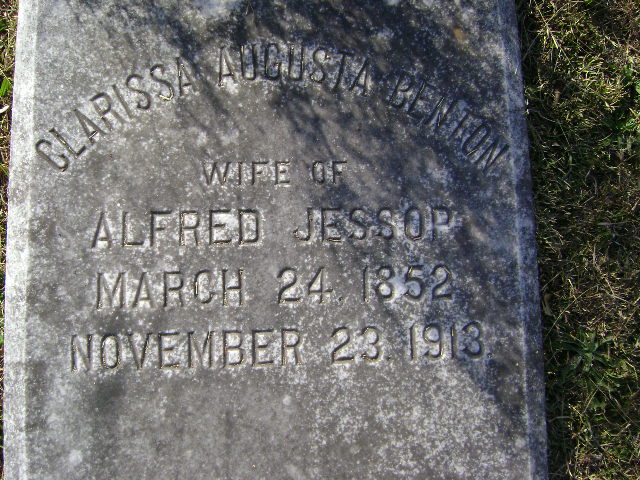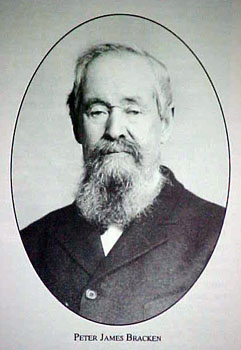Over the past several days, I've been bringing you the story of Dr. George W. Marvin: he was president of the First National bank of Cordele, Georgia, died in 1892, and was kept in the parlor of his widow for many months. Dr. Marvin was eventually laid to rest in Macon's Rose Hill cemetery. (
Here's part 1.)
The story unfolded with a lot of sensational details, some of them which might (here's the bursting bubble part)
not be true. *Gasp!* I know, we have been hearing for some time about how old newspapers are a great resource for family historians.
And that is absolutely correct. However, we must remember they are not perfect sources. The information provided must be followed up on, and more evidence must be gathered to prove or disprove whatever genealogical problem we are trying to solve.
It is in this vein that I have provided the following. If you are serious about researching the life of Dr. George W. Marvin (or Mrs. Theodora Trammell Marvin Bivins, or Mr. Joseph E. Bivins), here is some additional information and articles that I have culled in my hours (meaning, actually very little time in the scheme of things) of research. Some newspaper articles were transcribed and posted on my
Southern Graves site.
- According to the
U.S. City Directories, 1821-1989 database, there was a
George W. Marvin, physician and surgeon in Omaha, Nebraska in 1870.
- 1880 U.S. Census for Atlanta, Fulton County, Georgia
Enumeration District #95, Pg 5, Dwelling 35, Family 45
#360 Whitehall Street
Marvin, George W. (head) age 45; Physician; b. England
Marvin, Georgia (wife) age 35; Keeping House; b. Georgia
Rogers, Synthia (mother-in-law) age 80; b. North Carolina
- According to the
Oakland Cemetery, Atlanta, Georgia database, buried there is a
Mrs. George Marvin, d. 13 June 1888, aged 47. This might be the widow Pitts.
-
The Constitution (Atlanta, Georgia)
13 June 1888
DEATHS.
Last night about 12:30 Mrs. Marvin wife of Dr. George Marvin, died at her home, 365 Whitehall street.
Fits widow Pitts theory.
-
The Constitution (Atlanta, Georgia)
13 March 1889
Last evening, at his residence, 365 Whitehall, Dr. George W. Marvin married Miss Theodora Trammell, a most charming lady, the ceremony occurring at 8 o'clock...Dr. Marvin is a prominent physician, well known in this city; his bride is a lady of many accomplishments...
Less than a year after the death of the widow Pitts. Late evening wedding, but not "after midnight."
-
The Atlanta Constitution (Georgia)
21 April 1895, pg. 26
SUPREME COURT OF GEORGIA
Proceedings Yesterday.
- Theodora Bivins et al. v. F. G. Marvin.
Argument concluded.
Fits theory that Theodora Trammell was the wife that went with Dr. Marvin to Cordele, as well as name of alleged son (Francis G. Marvin).
-
Two Husbands article dated 12 October 1896: describes Theodora Trammell Marvin Bivins as an "old maid in Atlanta," and implies Dr. Marvin (of Omaha, Nebraska) made $1,000,000 with "some real estate speculations." Reiterates that Dr. Marvin was eventually buried in Rose Hill Cemetery. Article published not long after the death of Mrs. Bivins.
-
Casket In The Parlor article dated 28 November 1896: States Mrs. Bivins died "a week or so ago," and that she had married Dr. Marvin in Atlanta "about ten years before." Reiterates the notion of Dr. Marvin having a gold cane and diamonds on his shirt front. States the widow Marvin married Joseph E. Bivins approximately 13 months after the death of Dr. Marvin. (It also provides this wonderful image at right.)
-
Bivins Writes Of Marvin article dated 22 July 1897: Joseph E. Bivins "says the history of the doctor's life has been exaggerated." He states Marvin never served time in the penitentiary. He also disagrees with the characterization of the judgement / compromise that gave Francis G. Marvin, the "alleged son of Dr. Marvin," a piece of his estate. Last line of Bivins' letter: "The treatment accorded his [Dr. Marvin's] memory by his alleged son and certain others, does not meet my ideas of propriety."
- According to
his tombstone photo at FindAGrave, Joseph E. Bivins was born 18 January 1866, and died 27 December 1898. Theodora is there, too, and her tombstone bears a marriage date for her and Joseph Bivins, as well as a death date. I cannot read either altogether. The death year does appear to be 1896. Both are buried in Sunnyside Cemetery at Cordele, Crisp County, Georgia. Joseph's brother J. W. (James William?), b. 1869, d. 1939 is also there.
-
Joseph E. Bivins Obituary dated 29 December 1898: Though the exact timing is ambiguous, (died "yesterday," but brother left him "doing well this morning") we do have death information. It also establishes siblings, specifically two brothers - F. J. and J. W. Bivins, who will later take control of the bank (that Joseph took control of after the death of Dr. Marvin).
-
A Georgia Romance article dated 2 February 1899: States Mr. Pitts was presumed dead after not returning from the Civil War, not that he died while running around in Florida after his wife and Dr. Marvin. Also states Dr. Marvin (with initials of J. B., of St. Louis, who died in 1891) arrived in Atlanta in 1869 with a wife and young son. Describes Joseph Bivins as a "young man about 30 years of age" around the time of Dr. Marvin's death. Reiterates that the body of Dr. Marvin was "turned...over to an undertaker for burial" in Macon, Georgia. Gave the long lost son of Dr. Marvin the first name of Harry. Describes Joseph Bivins as the third husband of the widow Marvin. Published just a couple of months after his death.
-
Receiver For Bank Of Cordele article dated 12 March 1899: Explains that the brothers (F. J. and J. W.) of Joseph Bivins are then running the First National bank of Cordele. States Dr. Marvin married Miss Trammell "after midnight." Also states Dr. Marvin died August 1892, his body was quietly buried in Macon, and Joseph Bivins died December 1898.







